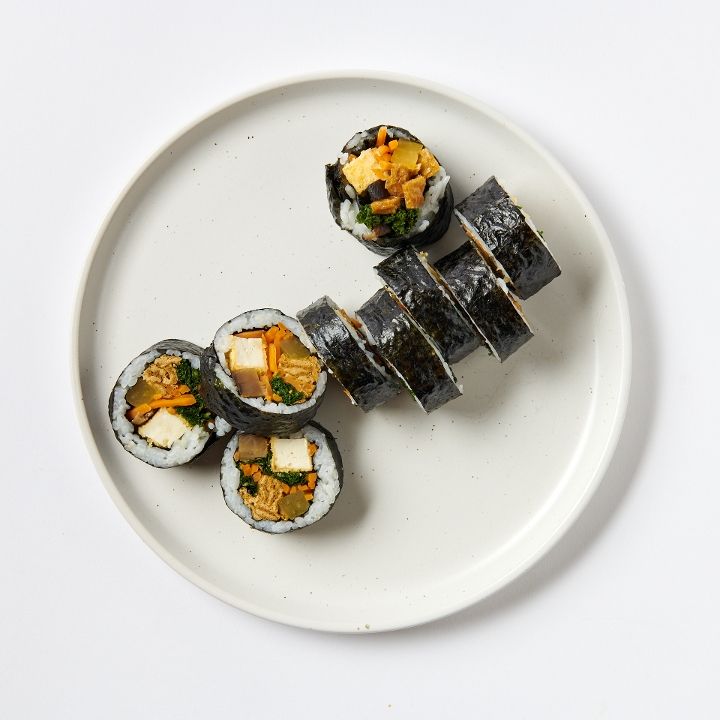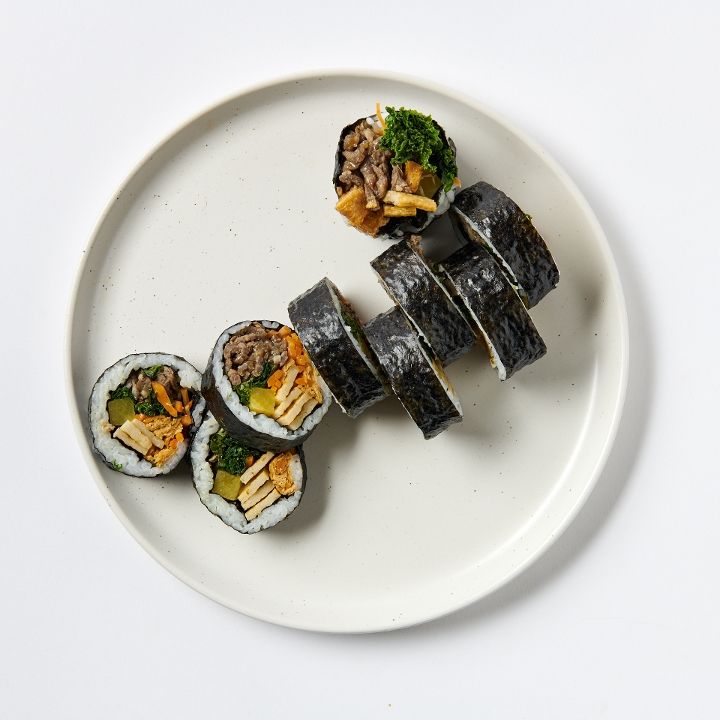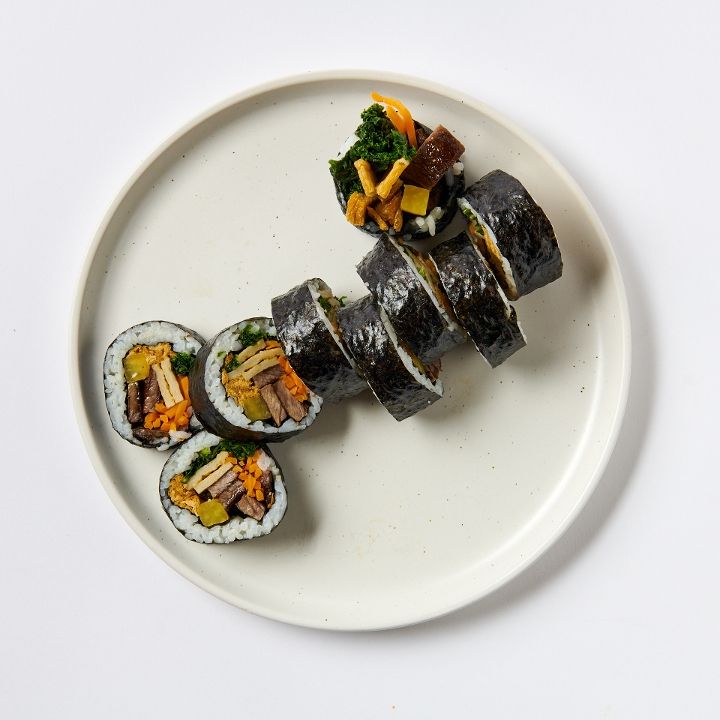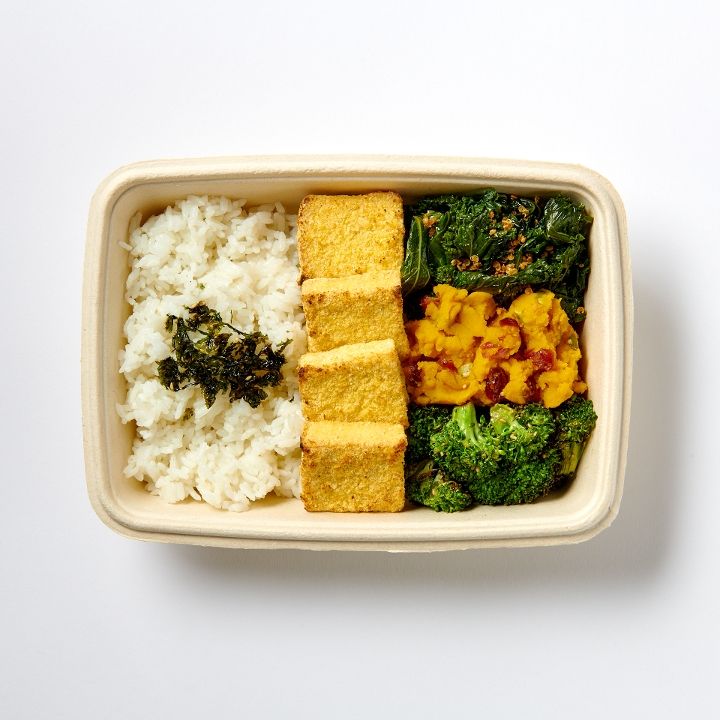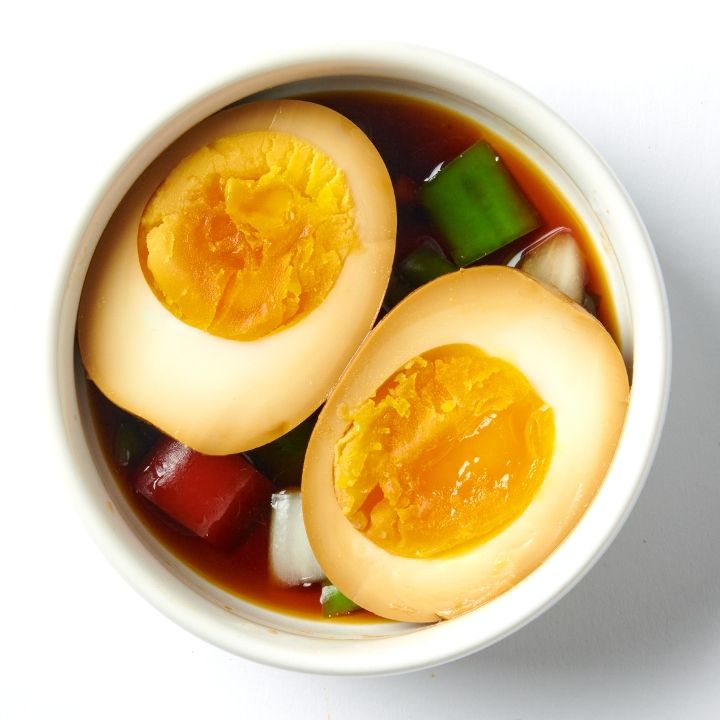A balanced roll that brings Korean culture and complete nutrition to the table.
Spicy Pork Kimbap @ Sopo
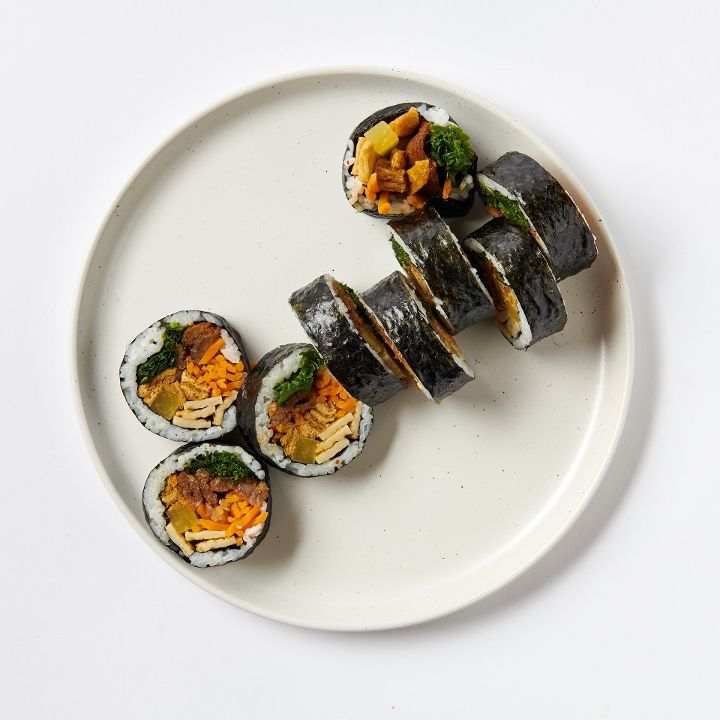
Benefits
Ingredients
Macronutrients
Best for lunch or an early dinner when you want something satisfying yet light. The roll is portable, easy to eat, and leaves you full without slowing you down.
Kimbap wraps steamed rice and seasoned vegetables in roasted seaweed, here paired with spicy pork. Seaweed adds iodine and minerals, pork offers protein and flavor, and the vegetables give freshness and fiber. Each slice reflects the Korean tradition of layering nutrition and taste in one compact dish.





